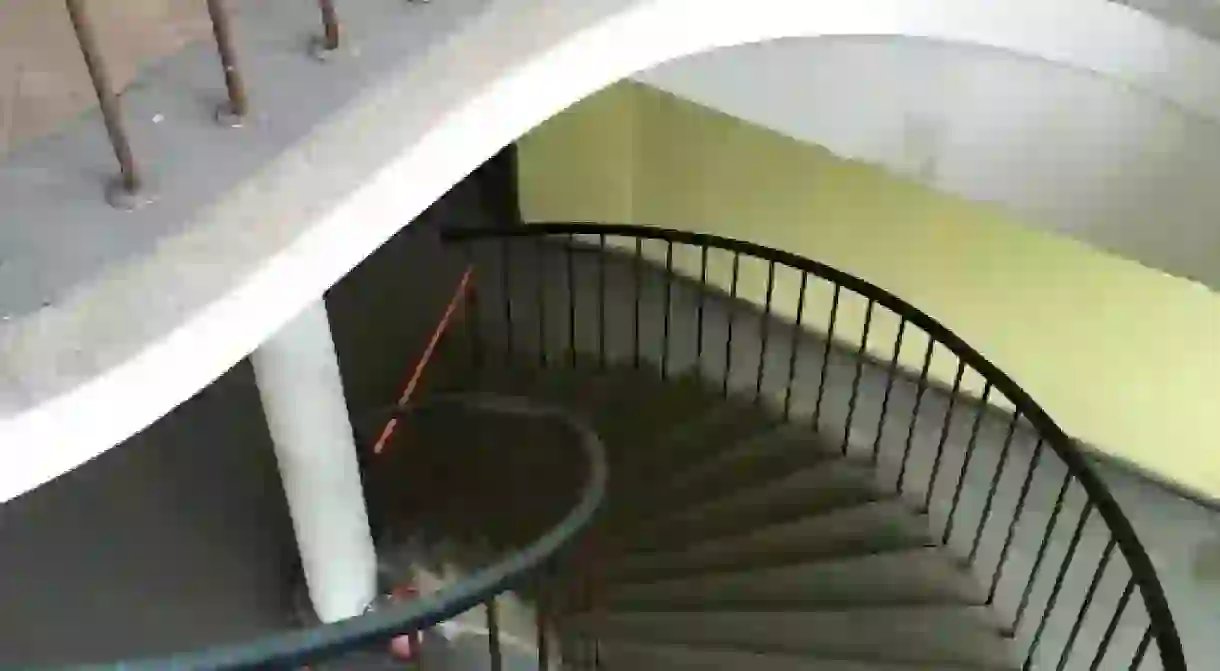Instagrammer In Focus: Juan Camilo Roa Covering Space & Structure in Berlin

Juan Camilo Roa is a Colombian based in Berlin and his unique collection of photographs draw attention to shape and structure, and snapshot aspect of the city you might not otherwise appreciate. He describes his Instragram feed as ‘a combination of architecture, urban photography and details of objects, places or situations I stumble upon on my daily life.’
Camilo Roa’s perspective of the city turns your eye to appreciate different perspectives and engages with the architecture of the city in a different way. He himself describes ‘Berlin is a kind of playground for this purpose: it is a city which contains all sorts of jewels with respect to spaces and architecture so I try to constantly investigate and research to discover them.’
Below he sheds a little light on the stories behind his images.

‘This is the facade of a gallery in Berlin which caught my attention because it defies the conventional look of a window. I intended to create a geometrical composition that would also be defined by the harmonic combination of colors from the light of the room behind the window, the frame of the window, and the wall surrounding it.’

‘I enjoy very much photographing patterns and this space included had many. First, the handrail, then the columns covered in riffled wood and the ceiling. One more interesting element is the white beam on the ceiling giving depth to the composition.’

‘I’m not sure who the architect from this building is but I suppose it’s Bruno Taut or some architect from the 1920s or 1930s. This is a typical facade of the New Objectivity style, which I enjoy photographing because of all the colors and geometrical shapes. The small piece of the tire of the bicycle which can be seen was put into the composition on purpose (that’s why the door is not centered into the composition but set into the right side of the photograph) in order to break-up the squareness of the rest of the elements in the composition.’

‘This photo was taking in Berlin-Mitte and it’s the entrance gate of a modern building. This photograph includes the pattern of the gate and two elements which break it: the “Löschwassereinspeisung” sign and the cobblestones, whose pattern generates an interesting contrast with the one of the gate.’

‘This is a photo of a building built last year in Prenzlauer Berg. This building caught my attention because of its elements (mostly the curvatures) which reference the architecture of the 1920s and 1930s as seen on some buildings at the Rosa-Luxemburg-Strasse (like Kino Babylon) in Berlin-Mitte. Particularly special here is the combination of colors: white, blue, grey and black, topped by the dollop of yellow from the sunset rays hitting on the highest part of the building.’

‘This is an organic composition which originates from the game between the curves and lines of the handrails of the staircase and the colors of the space.’

‘This photo was not taken in Berlin but in Cottbus. It’s the facade of the library of the Brandenburg University of Technology, a building designed by Herzog & Demeuron.’

‘This is the detail of a staircase at the I.M. Pei Building from the German History Museum in Berlin. The reddish tone seen on the left is the result of the light and the walls of one of the halls of the Homosexualität_ies exhibtion, curated by the team of Chezweitz (www.chezweitz.de).’

‘This is the control tower of the Tegel Airport in Berlin which called my attention because of its graphic character. I like photographing objects which gain a special character when thought of as two dimensional elements.’













